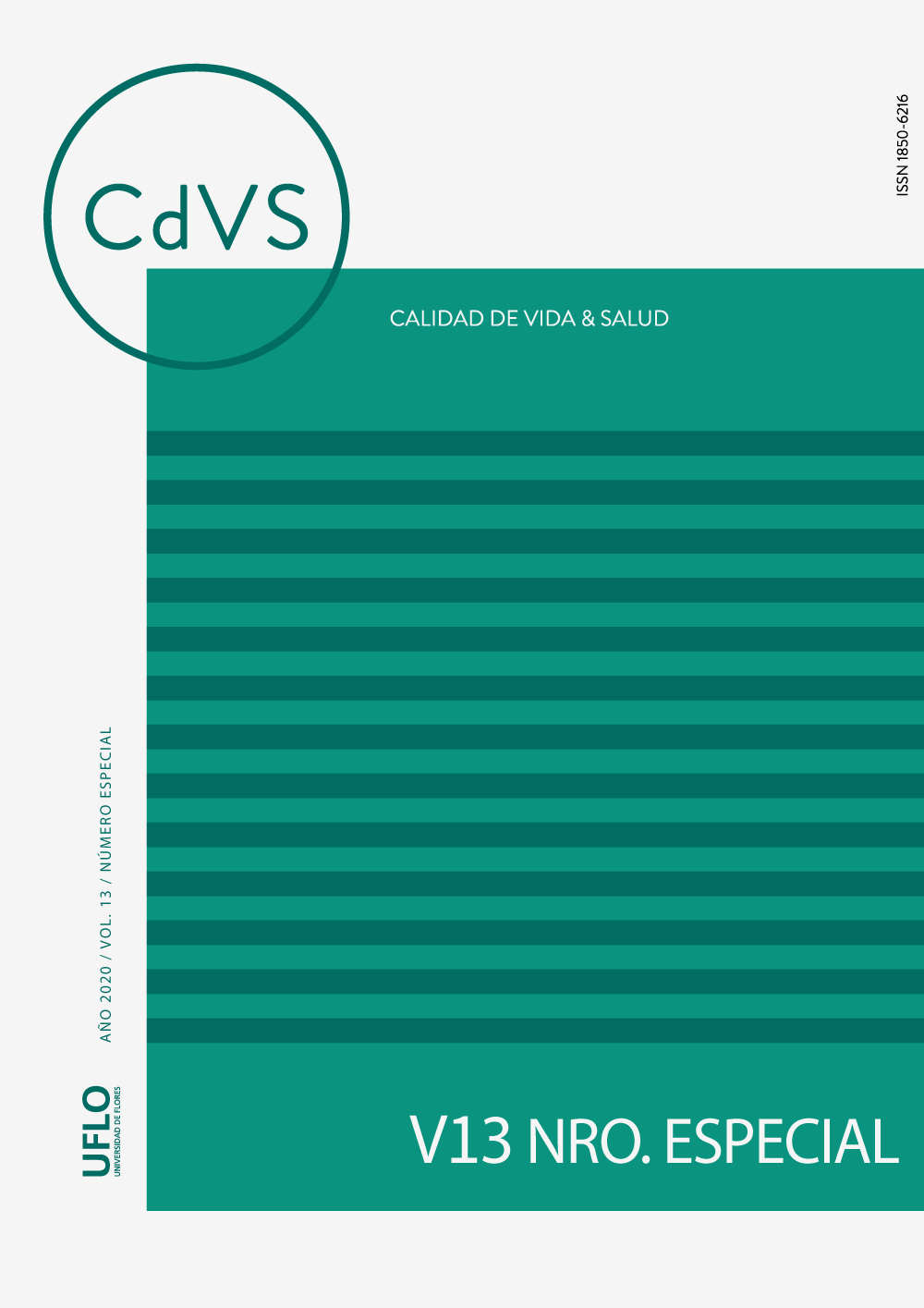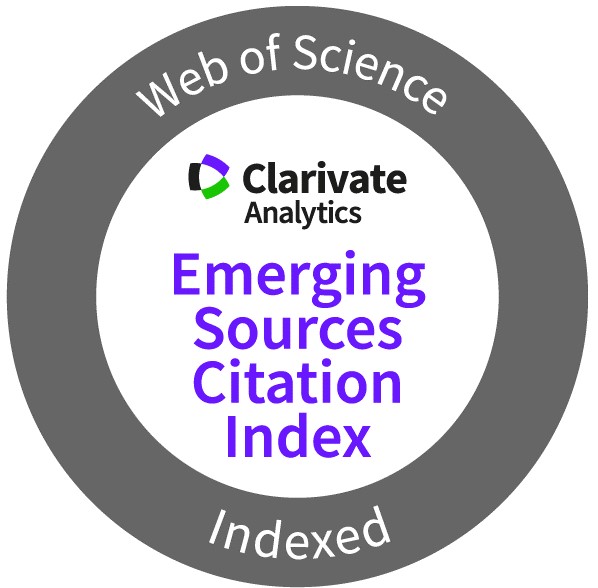Buen trato canino en las intervenciones asistidas: dos experiencias a la luz de los estándares internacionales
Palabras clave:
Bienestar animal, buen trato animal, intervenciones asistidas con animales, perrosResumen
Las Intervenciones Asistidas con Animales (IAA) requieren un particular cuidado del bienestar de los animales que en ellas
participan. En este trabajo se revisan los estándares internacionales de bienestar animal en las IAA, para focalizar a partir de allí en el manejo, entrenamiento y conducción que garantice el buen trato hacia los perros. Identificados los factores que inciden en
el bienestar y buen trato canino en las IAA, se analizan dos casos, uno en el ámbito de la educación para el cuidado responsable, otro en el de la salud. Se ilustra de este modo la variedad de arreglos posibles para garantizar el bienestar de los perros a través de estrategias que abarcan el perfil de guías y perros, el entorno, los beneficiarios y el diseño de la intervención.
Citas
Animal Assisted Interventions International. [AAII, 2018) AAII Standards of Practice. Disponible en: https://aai-int.org/wp-
content/uploads/2019/02/AAII-Standards-of-Practice.pdf
Animal-Assisted Intervention International (2016) Recommended Competencies for Animal Assisted Interactions. Autor original: Leslie Stewart. https://aai-int.org/wp-content/uploads/2019/02/AAII-Competencies-AAA-AAT-AAE-Feb-17-2019.pdf Consulta 1 de noviembre de 2019
Boracchia, J. (2018). El perro urbano: Una mirada psicosocial a los nuevos paradigmas en el vínculo entre el ser humano y el perro.
Buenos Aires: Autopublicación.
Broom, D. M. (1986). Indicators of poor welfare. British Veterinary Journal, 142, 524-526.
Carvalho, I., Nunes, T., de Sousa, L., & Almeida, V. (2019). The Combined Use of Salivary Cortisol Concentrations, Heart Rate and Respiratory Rate for the Welfare Assessment of Dogs Involved in AAI Programs. Journal of Veterinary Behavior. 10.1016/ j.jveb.2019.10.011.
Cavalli, C., Carballo, M. & Bentosela, M (en prensa). Intervenciones asistidas por animales: alcances, desafíos y limitaciones. Calidad de vida y salud.
Cavalli, C., Carballo, F., Dzik, M. V., & Bentosela, M. (2019). "Gazing as a help requesting behavior: A comparison of dogs participating in Animal Assisted Interventions and pet dogs" Animal Cognition. Springer Nature. Published online November 12, 2019.
Coren, S. (2004). How Dogs Think: What the World Looks Like for Them and Why They Act as They Do. NY, Free Press. Díaz Videla, M. (2017). Antrozoología y la relación humano-perro. Buenos Aires: Editorial de la Universidad de Flores.
Díaz Videla, M., & Olarte, A. (2018). La psicología del vínculo humano animal. Aportes de la psicología a la antrozoología y viceversa. En M. Díaz Videla & A. Olarte. Antrozoología: multidisciplinario campo de investigación (pp.1-21). Buenos Aires: Akadia.
Duncan, I. J. H., & Fraser, D. (1997). Understanding animal welfare. In M. C. Appleby & B. O. Hugues (Eds.), Animal Welfare. Wallingford, UK: CAB International.
Farm Animal Welfare Committee (2009). Five Freedoms. Consulta del 2 de noviembre de 2019 en: https://www.gov.uk/government/groups/farm-animal-welfare-committee-fawc
Ferrari, H., & Anzoátegui, M. (2019). Apuntes para un post-especismo: más allá (ya no) hay monstruos. Ludus vitalis, 27(51), 83-98.
Fine, A. (2019) Forward thinkng: The evolving field of human animal interactions. In A. Fine (Eds.), Handbook on Animal Assisted
Therapy: Foundations and Guidelines for Animal Assisted Interventions (pp. 23-41). Elsevier Academic Press.
Gee, N., & Fine, A. (2019). Animals in Educational Settings: Research and Practice. In A. Fine (Ed.), Handbook on Animal Assisted Therapy: Foundations and Guidelines for Animal Assisted Interventions (pp. 271-284). Elsevier Academic Press.
García Pinillos, R. (2018). One welfare. A framework to improve animal welfare and human well-being. CAB International.
Grandin, T., & Johnson, C. (2006). Animals in translation. San Diego: Harvest Book.
Horowitz, A. (2016). Being a dog: Following the dog into a world of smell. Scribner, NY.
Iacoviello, M. (2017). Cuidar a nuestros animales es cuidar el planeta: convivencia responsable con animales de compañía en la
Municipalidad de Vicente López. Trabajo presentado en el 10o Encuentro Internacional de Educación Infantil de la OMEP,
Organización Mundial de Educación Preescolar. Buenos Aires, Argentina, 5-7 de mayo de 2017.
Iacoviello, M. (2018). Potencial de las intervenciones asistidas con perros en las políticas públicas de bienestar animal. En M. Díaz Videla & M. A. Olarte (Eds.), Antrozoología, multidisciplinario campo de investigación (pp. 134-157). Buenos Aires: Editorial Akadia.
Iacoviello, V. (2015). Lo que tu perro trae de fábrica: cinco instintos para entender su comportamiento. Disponible en: https://proyectosaltavioleta.wordpress.com/lo-que-tu-perro-trae-de-fabrica/
International Association for Human Animal Interaction Organizations. [IAHAIO]. (2018). The IAHAIO definitions for animal assisted
intervention and guidelines for wellness of animals involved in AAI. Disponible en: http://iahaio.org/ wp/wp-content/uploads/2018/04/iahaio_wp_updated -2018-final.pdf
Laizerowitch, G. (2019). El rol del guía canino: una reflexión sobre la propia práctica. Disponible de: https://proyectosaltavioleta.
wordpress.com/ el-rol-guia-canino/
López Cepero Borrego, J. (2018). Animales de compañía y salud: Del vínculo humano-animal al diseño de intervenciones asistidas por animales. Ediciones Pirámide.
López García, C. A. (2004). Adiestramiento canino cognitivo-emocional. Madrid: Ediciones Díaz de Santos.
López García, C. A. (2013). Tu perro piensa y te quiere. Madrid: Dogalia.
MacNamara, M., & MacLean, E. (2017). Selecting animals for education enviroments. In N. Gee, A. Fine & P. McCardle (Eds.), How animals help students learn: Research and Practice for Educators and Mental-Health Professionals (pp. 182-196). Routledge.
MacNamara, M., Moga, J., & Pachel, C. (2019). What ́s Love got to do with it? Selecting animals for Animal Assisted Mental Health
Interventions. In A. Fine (Ed.), Handbook on Animal Assisted Therapy: Foundations and Guidelines for Animal Assisted Interventions
(pp. 101-114). Elsevier Academic Press.
Manteca, X. & Salas, M. (2015). Concepto de Bienestar Animal. Ficha Técnica ZAWEC, Zoo Animal Welfare Education Center. No. 1,
septiembre. Disponible en: https://www.zawec.org/media/com_lazypdf/pdf/Ficha%20ZAWEC%201.pdf
Mellor, D. (2016). Updating Animal Welfare Thinking: Moving beyond the "Five Freedoms" towards "A Life Worth Living". Animals (Basel) Mar 14;6(3).
Mellor, D. (2017). Five domains model and its key applications to the assessment and management of animal welfare. Animal Welfare Science and Bioethics Centre, Institute of Veterinary, Animal and Biomedical Sciences, Massey University, New Zealand.
Michaels, L. (2015). Do no harm. Dog training and behavior manual. Disponible en: http://www.dogpsychologistoncall.com/hierar
chy-of-dog-needs-tm/ Consulta 3 de noviembre de 2019.
Miklosi, A. (2018). The Dog: A Natural History. Ivy Press
Mills, D., Rogers, J., Kerulo, G., Bremhorst, A., & Hall, S. (2019). Getting the right dog for AAI: The essential understanding of dog
behavior and ethology for those working within AAI. In A. Fine (Ed.) Handbook on Animal Assisted Therapy: Foundations and
Guidelines for Animal Assisted Interventions (pp. 115-131). Elsevier Academic Press.
Ng, Z., Albright, J., Fine, A., & Peralta, J. (2019). Our ethical and moral responsibility: Ensuring the welfare of therapy animals. In A. Fine (Ed.), Handbook on Animal Assisted Therapy: Foundations and Guidelines for Animal Assisted Interventions (pp. 175-204). Elsevier Academic Press.
Pet Partners. (2018). Pet Partners Therapy Animal Program Handler Guide. Pet Partners, Bellevue, WA.
Stilwell, V. (2019) The Secret Language of Dogs: Unlocking the Canine Mind for a Happier Pet. Ten Speed Press, Berkeley.
Webster (2016) Freedoms, dominions and a life that is worth living. Animals, 6.
Winkle, M., & Ni, K. (2019). Animal Assisted Occupational Therapy. In A. Fine (Ed.), Handbook on Animal Assisted Therapy:
Foundations and Guidelines for Animal Assisted Interventions (pp. 381-395). Elsevier Academic Press.
Publicado
Cómo citar
Número
Sección
Los autores que publican en esta revista están de acuerdo con los siguientes términos:
- Los autores conservan los derechos de autor y garantizan a la revista el derecho de ser la primera publicación del trabajo al igual que licenciado bajo una Creative Commons Attribution License que permite a otros compartir el trabajo con un reconocimiento de la autoría del trabajo y la publicación inicial en esta revista.
- Los autores pueden establecer por separado acuerdos adicionales para la distribución no exclusiva de la versión de la obra publicada en la revista (por ejemplo, situarlo en un repositorio institucional o publicarlo en un libro), con un reconocimiento de su publicación inicial en esta revista.
- Se permite y se anima a los autores a difundir sus trabajos electrónicamente (por ejemplo, en repositorios institucionales o en su propio sitio web) antes y durante el proceso de envío, ya que puede dar lugar a intercambios productivos, así como a una citación más temprana y mayor de los trabajos publicados (Véase The Effect of Open Access) (en inglés).









